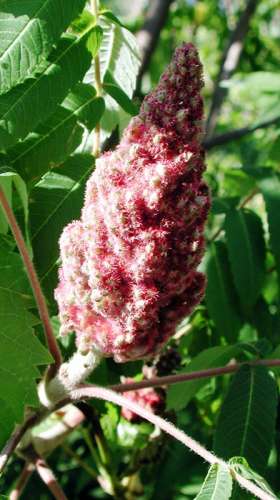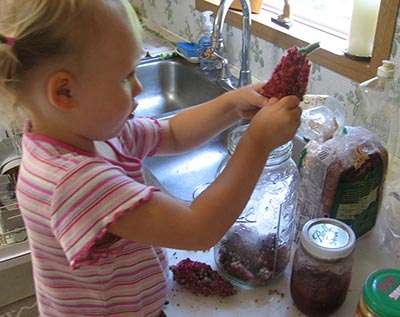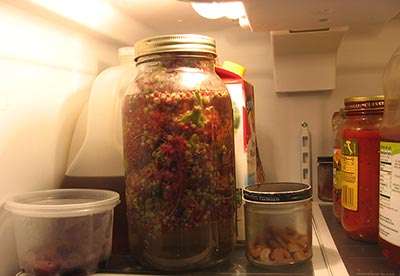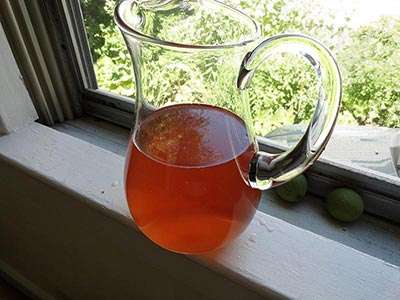I’m not the type to crave foods, wild or otherwise, but on the hottest days of summer when the cicadas are whirring, I do get a serious hankering for sumac-ade. No wild drink is easier to procure. Nor can I think of one more universally liked.
Many non-foraging folks already recognize the long, pinnately compound leaves, velvethairy branches, gangly growth, and red, elf-hat seed clusters of the staghorn sumac (Rhus typhina). But on more than one occasion, skeptics have interrupted my foraging to ask, “Don’t you know those are poisonous?” I’m not sure how this common roadside plant earned this reputation, but I suspect it has to do with the fact that it shares a common name with Toxicodendron vernix, the poison sumac.
These two plants are in the same family, Anacardiaceae, but the fruits of poison sumac are drooping clusters of waxy, white berries (green when unripe) that are not likely to be mistaken for the fuzzy, red, steeple-shaped seed clusters of the staghorn. There are other members of the Rhus genus that do have similar-looking seed clusters, but fortunately, they are also edible. Still, as with any new food, it is best to begin with caution. People with allergies to other members of this family (like cashews, mangoes, and pistachios) are often allergic to sumac, as well.
I look for the sumac seed clusters when they reach their brightest burgundy red; where I live, this usually takes place in July. They can be gathered both before and after their peak, but their flavor is not as good. The soluble acids that give the sumac its tart flavor readily wash away in rain, so connoisseurs will watch the weather as carefully as the ripening.
To prepare the sumac-ade, I use my hands to break off enough of the sticky clusters to loosely fill a half-gallon jar. I crush and bruise the fruit, which seems to facilitate the infusion. The stems of the sumac contain tannins and a white latex sap. Steeping in hot water leaches their bitter flavors into the beverage to unpalatable effect. So I cover the berries in cold water instead and leave the infusion in my refrigerator overnight, sometimes longer. When ready, the water has a reddish-pink blush and a tart, refreshing flavor. I use a jelly bag or cheesecloth to strain the hairs, and then sweeten to taste with a little sugar syrup that I boil on the stove. I serve it cold and in a wine glass, a flamboyance that the best sumac infusions have definitely deserved.
Of course, none of this fussing is necessary. My first experience with sumac-ade was much simpler: I was 16, and a friend and I popped a few of the red seed clusters into a water bottle while out on a hot day-hike. Later, we strained out the hairs with a T-shirt and took turns sipping the tart pink liquid at an overlook. I was hooked from that first sip, and every July since I’ve gotten a craving.





